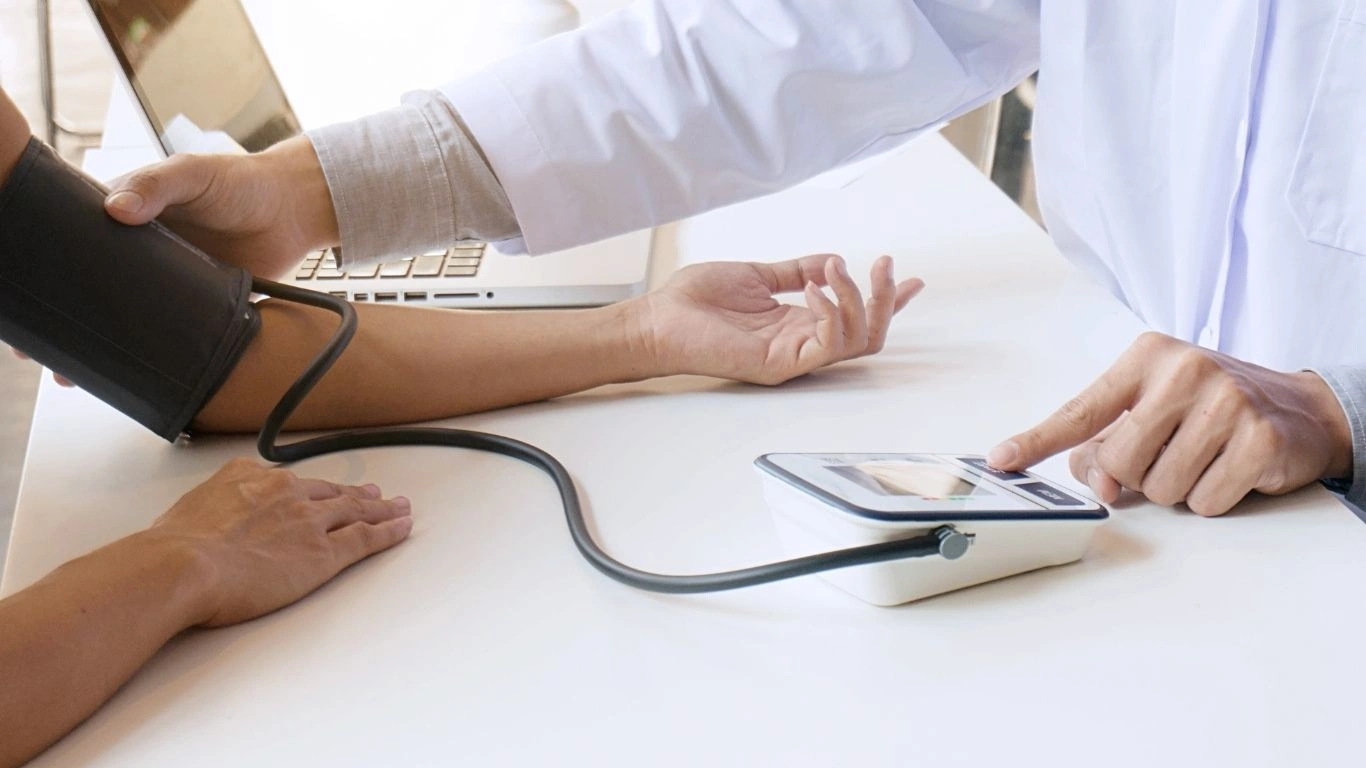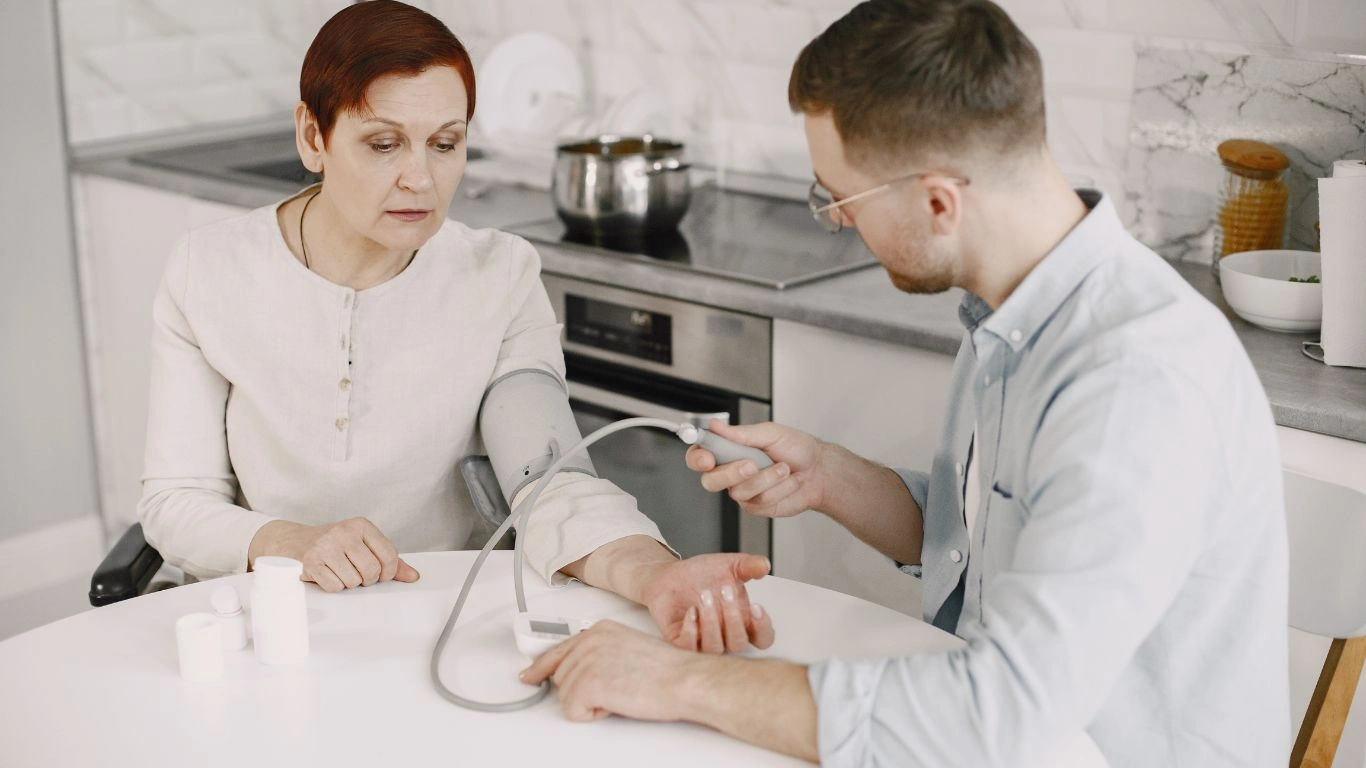How to Stay Active with Chronic Hypertension: Boost Your Heart Health Today
Living with chronic hypertension can be a constant challenge, but staying active is one of the most powerful tools in managing it. As an Internal Medicine Physician with a focus on Hypertension Management, I’ve seen firsthand how regular physical activity can make a huge difference in patients’ blood pressure control, overall health, and quality of life. The question many patients ask is, “How to stay active with chronic hypertension?” And the good news is, it’s absolutely possible—and it doesn’t require running marathons or pushing yourself to extremes. Let’s break down some practical, safe, and effective ways to incorporate more movement into your daily routine.
Understanding the Link Between Hypertension and Physical Activity

Before we dive into specific exercises, it’s important to understand why staying active is so essential when you have chronic hypertension. Hypertension, or high blood pressure, happens when the force of the blood against the walls of your arteries is consistently too high. This can strain your heart and lead to serious conditions like heart disease, stroke, and kidney problems. But here’s where the good news comes in: physical activity helps lower blood pressure by improving blood flow, reducing stress, and helping your heart work more efficiently.
Exercise doesn’t just help you lower your blood pressure in the short term. Over time, regular movement can improve your body’s ability to regulate blood pressure naturally. Think of it like putting your heart and arteries through a tune-up. And with a little consistency, the benefits can last far beyond your workout.
Start Slow and Steady

If you’ve been living with high blood pressure for some time, you might be wondering if jumping straight into intense exercise could do more harm than good. The key is to start slow and listen to your body. The idea isn’t to push yourself to exhaustion or engage in strenuous activities right away. Instead, aim for gentle, low-impact exercises that gradually increase your heart rate and endurance.
One of my go-to recommendations for patients who are new to exercise or who have been inactive for a while is walking. It’s an incredibly easy way to get started, and it’s something you can do almost anywhere. Whether it’s around your neighborhood, at a local park, or even indoors on a treadmill, walking offers a heart-healthy workout that’s easy on your joints and doesn’t put too much strain on your body.
Pro Tip: If you’re walking outdoors, be sure to wear comfortable shoes and aim for 30 minutes a day, most days of the week. You can break it up into smaller 10-15 minute sessions if that feels more manageable to you. The goal is to make movement a regular part of your day.
Types of Exercises that Benefit Hypertension

Now, let’s talk about the types of exercises that are most beneficial for managing chronic hypertension. Keep in mind that not all exercises are created equal, and some activities are particularly effective at lowering blood pressure.
1. Aerobic Exercise: The Blood Pressure Buster
Aerobic exercises, also known as cardiovascular exercises, are key for improving heart health and lowering blood pressure. These types of exercises get your heart rate up, which helps your cardiovascular system work more efficiently.
- Walking – As mentioned earlier, walking is one of the best forms of aerobic exercise. It’s accessible, low-impact, and doesn’t require any special equipment.
- Cycling – Whether it’s on a stationary bike or riding outside, cycling is another excellent form of cardiovascular exercise that’s easy on the joints.
- Swimming – Swimming works your entire body and provides a great aerobic workout while being gentle on your joints, which is perfect if you have arthritis or other joint concerns along with hypertension.
- Dancing – If you enjoy music and moving your body to the rhythm, dancing can be a fun way to get your heart pumping!
2. Strength Training: The Muscle Boost
Strength training, also known as resistance training, can help build muscle mass, which in turn can improve your metabolism and support your cardiovascular health. While it might seem like weightlifting could be too intense, moderate strength training is generally safe and effective for people with hypertension when done correctly.
Start with lighter weights or resistance bands and focus on performing exercises with proper form. You can also use bodyweight exercises like squats, lunges, or push-ups. The goal is to strengthen your muscles, which supports overall cardiovascular health and can contribute to better blood pressure control.
3. Flexibility and Balance Exercises: Don’t Forget to Stretch
While aerobic and strength exercises are crucial for controlling hypertension, don’t overlook the importance of flexibility and balance exercises. These types of exercises improve your posture, reduce stress, and enhance overall well-being.
- Yoga – Yoga is a great way to stretch, strengthen, and relax. Certain yoga poses have been shown to reduce stress, which can help lower blood pressure.
- Stretching – Simple stretching exercises can improve flexibility and prevent muscle stiffness. This is especially important if you spend a lot of time sitting during the day.
- Tai Chi – This gentle form of martial arts combines slow, deliberate movements with deep breathing, promoting relaxation and balance.
Remember, consistency is the key. It’s not about doing one intense workout and calling it a day. Incorporating a mix of aerobic, strength, and flexibility exercises into your routine will give you the best results in managing chronic hypertension.
Incorporating Active Habits Into Your Daily Routine

When it comes to managing chronic hypertension, the key isn’t just finding time to hit the gym, it’s about creating sustainable, active habits throughout your day. This is something I emphasize to my patients all the time: consistency is everything. The more you weave movement into your routine, the easier it becomes to stay active and reap the benefits. As a busy physician, I get it—life is hectic, and finding time to work out can seem impossible. But you’d be amazed at how small, intentional changes can add up over time.
Start Your Day with Movement
One of the easiest ways to ensure you stay active is to begin your day with movement. If you’re someone who struggles with the motivation to exercise later in the day, a quick morning routine can do wonders. A 5 to 10-minute stretch or walk in the morning can set a positive tone for the rest of your day, and help get your blood flowing.
Here’s something I recommend to many of my patients: Try a morning stretch routine as soon as you get out of bed. A few basic stretches for your back, shoulders, and legs can help improve flexibility, reduce muscle stiffness, and promote better circulation. If you’re feeling ambitious, try adding a few squats or lunges to get your legs engaged. It’s a gentle, no-pressure way to ease into the day.
Or, if you have a bit more time, a brisk walk around your neighborhood can give you a boost of energy. Trust me, I’ve seen how even a short morning walk can help lower blood pressure and set the stage for a less stressful day.
Making Physical Activity Enjoyable

One of the biggest hurdles to staying active with hypertension is the “ugh” factor: exercise can feel like a chore. But here’s a little secret from my personal experience: the more fun you have with it, the more likely you are to stick with it. I’ve worked with patients who dread exercise, only to see them fall in love with an activity once they gave it a try. So let’s talk about how to make staying active something you actually enjoy.
Find What You Love
Have you ever tried a new activity that you thought you’d hate, only to discover that you loved it? That’s the goal. Finding activities that are fun, energizing, and fit your personality is crucial for long-term success. For some, that means cycling through the neighborhood, while others may find joy in taking dance classes or joining a local hiking group.
Pro Tip: Don’t get stuck in the idea that exercise has to look a certain way. If you love to dance, why not take a Zumba class? If you’re a fan of nature, hiking is a great way to combine exercise and the great outdoors. The key is to discover something that excites you—because you’re far more likely to keep doing something you enjoy.
Social Exercise: Make It a Group Activity
Sometimes, the best way to stay consistent is by making exercise a social event. If you’re more motivated when you have a buddy, consider teaming up with a friend, family member, or even a colleague for regular workouts. This could mean setting up a walking or jogging routine with a friend, or joining a fitness group at your local gym.
When exercise becomes a social activity, it’s not just about the physical benefits—it’s also about the connection and support. Having someone to hold you accountable can help you push through those days when you just don’t feel like getting moving. And don’t underestimate the power of shared laughter or conversation during a workout. It makes the experience far more enjoyable and less like “work.”
Listening to Your Body and Adjusting Exercise Intensity

Now, let’s get real for a second: You’re not going to feel like exercising every day, and that’s totally okay. One of the most important things I remind my patients with hypertension is to listen to their body. If something feels off or you’re feeling more fatigued than usual, it’s crucial to adjust accordingly. Pushing yourself too hard can actually raise your blood pressure and lead to injury, which is the last thing you want when you’re trying to improve your health.
Here’s where understanding the right intensity comes into play. You don’t have to be dripping in sweat after every workout to see results. In fact, overexerting yourself is not recommended, especially for people with high blood pressure. Instead, focus on a steady pace that you can maintain without feeling dizzy or out of breath. The goal is to gradually increase your endurance and strength over time, not burn yourself out.
For aerobic exercises like walking or cycling, a good rule of thumb is to aim for a pace where you can still hold a conversation but are slightly out of breath. If you’re doing strength training, start with light weights or resistance bands, focusing on good form rather than lifting heavy weights. And when it comes to flexibility exercises like yoga or stretching, you should feel a gentle pull but never pain. Always listen to your body and take breaks when needed.
Don’t Forget About Rest and Recovery
Lastly, a topic that’s often overlooked but just as important as the exercise itself: rest and recovery. It’s easy to get caught up in the idea that more is always better, but rest days are essential for allowing your muscles to recover and for keeping your blood pressure stable. Overdoing it can lead to burnout, which can ultimately set back your progress.
On your rest days, focus on gentle activities like stretching, deep breathing exercises, or even a light walk to keep your body moving without overloading it. If you’re feeling particularly sore or fatigued, consider scheduling a longer recovery day to let your body fully reset.
In my experience, those patients who balance their exercise with proper rest and recovery tend to see the best results in terms of both blood pressure control and overall well-being. So don’t feel guilty for taking it easy sometimes—it’s part of the process.
Staying Active for Long-Term Hypertension Management

At this point, you’re probably starting to get the idea that staying active with chronic hypertension doesn’t have to be a daunting task. In fact, once you get into the habit of regular movement, you might actually find that it’s something you look forward to. But how do you keep it up for the long haul? In my experience as a physician working with patients with hypertension, it’s all about making small, sustainable changes that work with your lifestyle.
Let’s dive into how you can maintain an active routine, adapt as your body responds, and stay motivated for the long-term health benefits. Remember, managing hypertension through physical activity is a marathon, not a sprint. Consistency, not perfection, is the key to lasting results.
Set Realistic and Achievable Goals
One of the most common mistakes I see in patients trying to manage hypertension with exercise is setting unrealistic expectations. You might start with high hopes, but when you don’t see immediate, dramatic changes, it’s easy to get discouraged. So, my first piece of advice is: set achievable goals that are both realistic and motivating.
Instead of aiming for a super ambitious goal like running a 5k right away (unless that’s something you already love to do), start with small, tangible goals that you can hit on a weekly basis. For example:
- Walk 10,000 steps a day for a week.
- Commit to 3 short strength-training sessions per week.
- Gradually increase your walking time by 5 minutes each week until you reach 30 minutes of continuous walking.
Tracking these small wins, no matter how minor they seem, can help you feel a sense of accomplishment and motivate you to keep going. It’s all about the little victories adding up over time. And if you fall short of a goal, it’s okay—what matters is that you keep trying and adjusting as needed.
Adjusting Your Exercise Routine Based on Your Progress
As you continue exercising, you’ll begin to notice that your body starts to adjust. You’ll have more energy, your blood pressure will stabilize, and you might even feel more mentally clear. But just as importantly, you’ll need to reassess your exercise routine as your fitness level improves. It’s not about doing the same workout every day—it’s about progressing.
One of the things I always tell my patients is that your body is like a muscle. You need to challenge it enough to stimulate improvement, but you don’t want to overwhelm it. So, as you get fitter, you can begin to:
- Increase the intensity of your aerobic exercises (e.g., brisker walking, cycling with more resistance).
- Add more weight or resistance to strength training exercises.
- Try different types of exercises to keep things fresh and avoid burnout (e.g., yoga, swimming, or group fitness classes).
Even with these adjustments, remember that it’s all about maintaining a healthy balance. If you ever feel that your exercise routine is becoming too taxing, don’t hesitate to scale back. The goal is progress, not perfection.
Finding Support and Accountability

Let’s be real—staying motivated on your own can sometimes feel like an uphill battle. That’s why finding support and accountability is a game-changer when it comes to managing chronic hypertension through physical activity. Whether you find a workout buddy, join a fitness group, or even hire a personal trainer, having that external encouragement can make all the difference in staying consistent.
Join a Community or Group Class
If you thrive in a social setting, a fitness community can be your best friend. Group exercise classes, whether virtual or in-person, provide both a structured routine and a sense of camaraderie. I’ve seen patients who were initially reluctant to work out become regulars in yoga, spinning, or walking groups simply because they enjoyed the social aspect and the accountability that came with it. Plus, knowing that others are counting on you to show up can be a huge motivator!
Fitness communities also create a sense of belonging and provide a support system that can help you push through the tough days. I highly recommend finding a group that aligns with your exercise preferences. Whether it’s a walking club, a cycling team, or an online yoga class, the social benefits are invaluable in maintaining long-term motivation.
Work with a Health Coach or Personal Trainer
If you prefer more personalized guidance, consider working with a health coach or personal trainer who specializes in working with individuals with chronic conditions like hypertension. A certified trainer can help you develop a safe and effective exercise program tailored to your specific needs and abilities. They can also help ensure that you’re using proper technique to avoid injury, and they’ll keep you accountable to your fitness goals.
Having that one-on-one support can be especially helpful if you’re new to exercise or have concerns about the intensity of certain activities. Plus, knowing that someone is there to guide you every step of the way can help you stay committed to your routine. I’ve had many patients who’ve experienced significant improvements in their blood pressure after just a few months of working with a fitness professional.
Additional Tips for Success
Before we wrap up, I want to leave you with a few additional tips that I’ve found to be helpful for maintaining an active lifestyle with chronic hypertension:
- Consistency is key: Make exercise a regular part of your daily routine, just like brushing your teeth. Set a time and stick to it as much as possible.
- Track your progress: Keep a journal of your workouts and how you’re feeling. This can help you stay motivated and provide insights into what’s working and what’s not.
- Don’t forget to hydrate: Staying well-hydrated is essential, especially when you’re increasing your activity levels. Aim for at least 8 cups of water a day, and more if you’re sweating during exercise.
- Stay patient: Results take time. It might take a few weeks or months to start seeing noticeable changes in your blood pressure, so be patient with yourself.
Lastly, don’t underestimate the importance of mental health. Stress plays a huge role in hypertension, and regular physical activity is one of the best ways to reduce it. So, when you’re out for your walk, cycling, or stretching session, remember that you’re not just helping your body, but also your mind. Staying active is a holistic approach to overall well-being, and it’s an investment in your long-term health.
References
For more information on hypertension management and physical activity, you can check out trusted resources such as National Institutes of Health and Health.com.
Disclaimer
The content in this article is intended for informational purposes only and should not be considered as medical advice. Please consult with your healthcare provider before making any significant changes to your physical activity routine, especially if you have chronic hypertension or any other medical conditions.

Dr. Gwenna Aazee is a board-certified Internal Medicine Physician with a special focus on hypertension management, chronic disease prevention, and patient education. With years of experience in both clinical practice and medical writing, she’s passionate about turning evidence-based medicine into accessible, actionable advice. Through her work at Healthusias.com, Dr. Aazee empowers readers to take charge of their health with confidence and clarity. Off the clock, she enjoys deep dives into nutrition research, long walks with her rescue pup, and simplifying medical jargon one article at a time.






